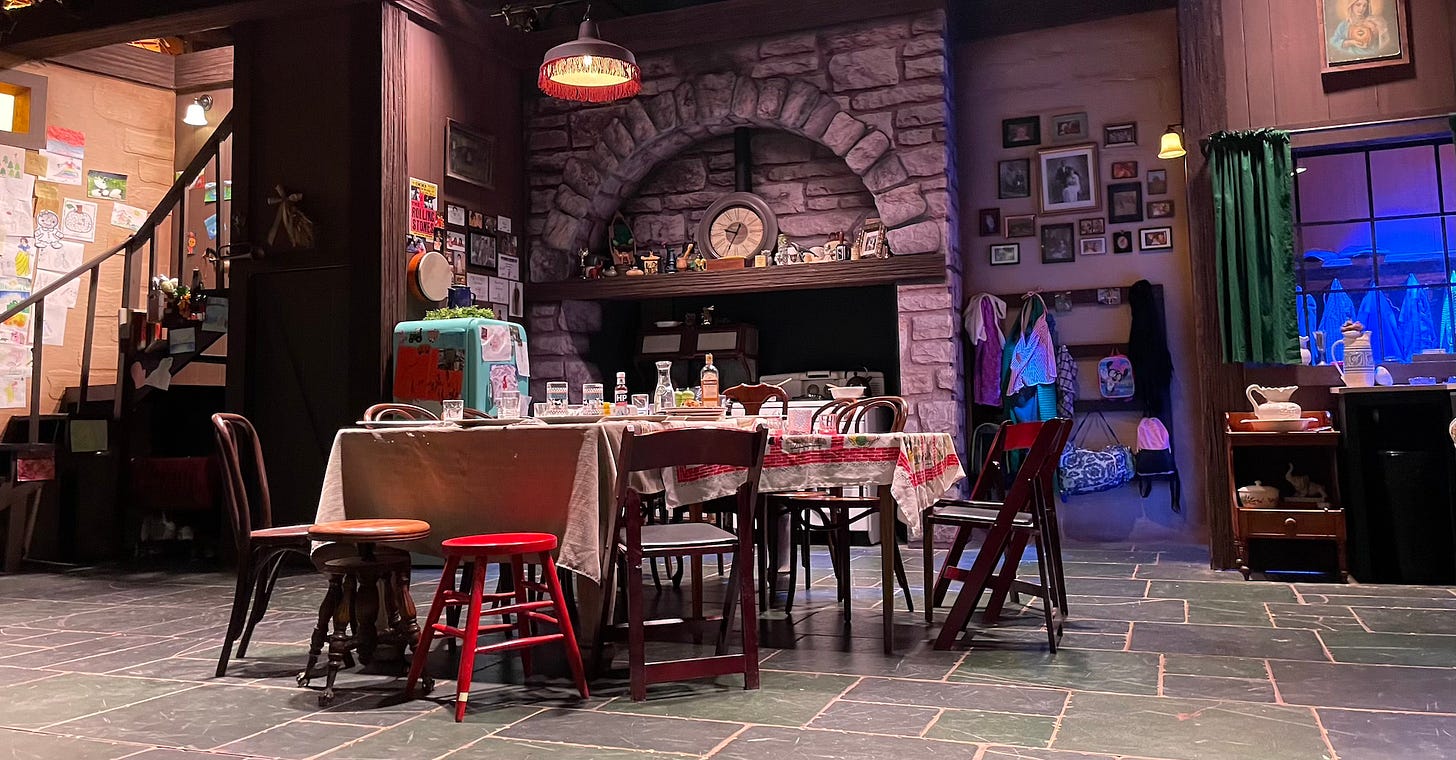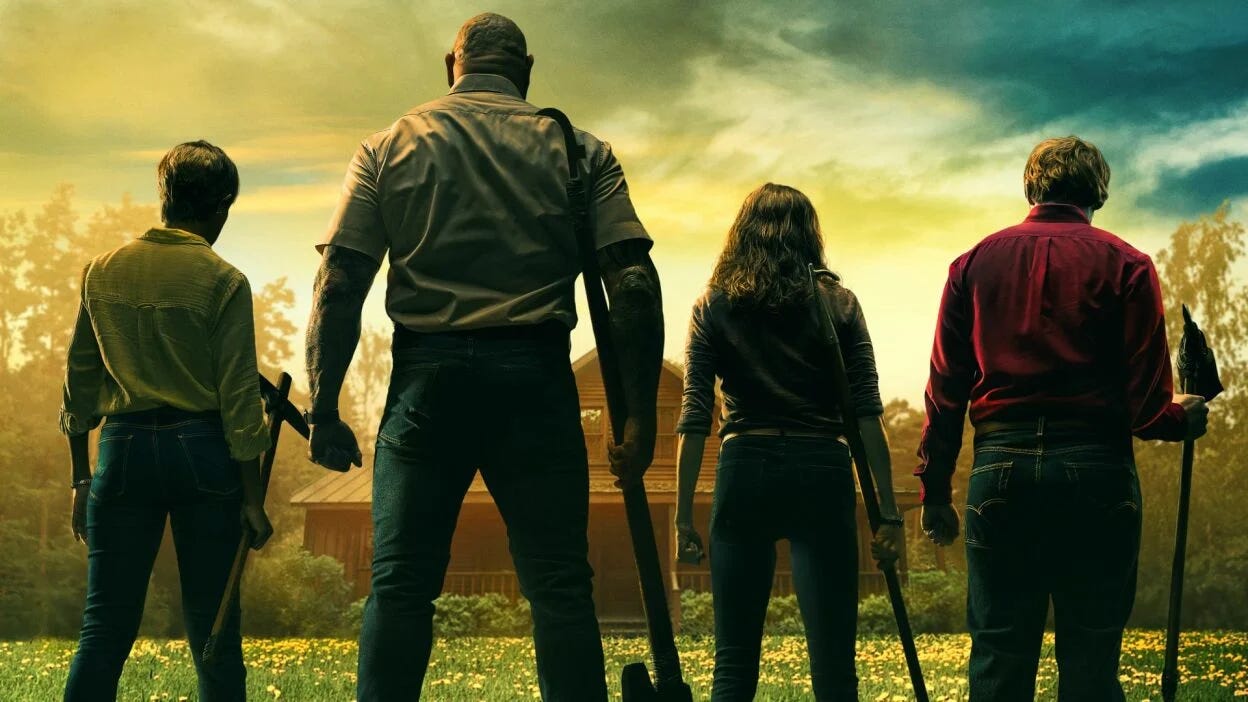The End of the Middle
Jez Butterworth, Wendy Richmond, M. Knight Shyamalan and some impractical thoughts about writing
One of the best feelings one can have as a reader is to approach the end of a novel and wish that it would go on and on. This is not an experience I’ve ever had as a writer. I’m not sure anyone has.
Writing a novel is difficult and it gets more difficult as it goes on. That’s what a novel is: a series of complications.
Just as stories have beginnings, middles, and ends, those sections can be further segmented: the middle of the beginning, the end of the middle, the beginning of the end, and so on.
I’m about two-thirds of the way through a new novel—the end of the middle—which is a dangerous place to be.
Two-thirds means I’m still in the midst of the middle but am now thinking about the end while also entertaining doubts about the beginning. These doubts stem from the fact that after crossing the mid-point—the middle of the middle—my worries have shifted from “Is this a book?” to “How badly have I screwed this up?”
Call it the point of no return. This is not the point of no return in a story; it’s the point of no return that exists only in the writer’s mind.
I was conversing with a writer recently who worried about some creative choices they’d made at the outset of a novel that affected the shape of the book. Were these the right choices? Was this the right shape?
These are point-of-no-return questions. These questions are also an act of sabotage. When a writer in the middle turns their attention away from the path that will take them to the end, it increases the likelihood of getting lost.
One thing I know, writers love a good meander. Why chew on difficult character concerns and story problems that await me in the final act, for example, when I can endlessly rearrange the furniture in the opening chapter?
Middles are tough. I went to a play at New Village Arts here in San Diego on Friday night, a production of Jez Butterworth’s The Ferryman, which is about The Troubles in Northern Ireland. The story centers on a large messy family. There’s the father, his wife, their seven children (!), a pair of aunts, an uncle, a deceased brother, the deceased brother’s wife, her son, and a half-wit Englishman. There are scenes when all of these characters are on stage at the same time (except for the deceased brother). That’s fifteen people!
Here's what Butterworth had to say about writing a story with such a large cast:
“Once I began, the kids just kept showing up and it sort of felt like when I was growing up. It was like, there was always another person coming down the stairs, and you had to fight for your bit of bandwidth to be able to be heard. And so it’s not really a choice. And I remember thinking a sort of a glow of gleeful anticipation of what it would be like being in the theater where there were that many young people.”
In the middle of the play there’s a dance I thought was choreographed extremely well and at that point I was able to reflect on this crowd of people on the stage. I knew most of the characters’ names and their relations to each other. I could anticipate the kinds of things they would say and how they would react in certain situations.
It was kind of magical, really, how much information I’d absorbed about this make-believe family in such a short period of time. While it’s fun to imagine Butterworth’s “glow of gleeful anticipation,” like a mad scientist in his laboratory, he almost certainly had misgivings about the people in the audience being able to keep all of his characters straight.
Those misgivings are valid but they’re for after the work is completed. That’s the time for going back and interrogating your creative choices.
I’m a big fan of Wendy Richmond’s book Art Without Compromise* (the asterisk in the title absolutely kills me). Richmond is many things: a visual artist, a writer, an educator. In her book she argues it is essential for artists to evaluate their work before they share it with others.
Evaluate probably doesn’t go far enough for what Richmond advocates. As part of her process she ruthlessly interrogates her work when she completes it. She wants to know where it came from, how it differs from previous work, how she feels about it, and so on. Only by interrogating the work will we know how to respond to the feedback we receive, whether it’s high praise or crushing rejection. Richmond calls these “The Underlying Questions.” She argues:
“You must have a clear understanding of what your work is ‘about.’ You need to be able to articulate its themes, how it developed, and where it’s going.”
This makes perfect sense to me. For writers, there’s a natural inclination to evaluate our creative choices at the end of the project because it’s easier to go back and revise a novel or a poem than it is to, say, “revise” a bronze sculpture.
But it goes much deeper than that. In many cases writers resist asking themselves these questions and fall back on the idea that the work should speak for itself. In my review of Art Without Compromise that I linked to above, I wrote:
The artist who lacks an understanding of their work--where it comes from and where it’s going--cannot make informed decisions about it. By contrast, the writer who has a clear vision of what they are trying to accomplish make choices not compromises.
There have many times in my career where I’ve aggressively avoided these questions and my thinking was anything but clear.
Here’s the point: no one knows everything they need to know when they begin a book. The path out of the opening and into the middle and through to the conclusion teaches you what you need to know.
When I started Corporate Rock Sucks (preorder the paperback), I only knew a fraction of the material that went into the book. I’m not being modest. I’d read a few books and talked to a few people but that’s it.
Writing that book was like the introduction to Get Smart, each interview I did opened another secret chamber. Because the doors closed behind me as soon as I got off the phone with my subject, there was only one thing to do and that was to go forward.
Some writers need to know everything before they can start, I just need enough to get started. As Admiral Byrd said of his long flights over Antarctica: You have to trust your instruments.
This trust has helped me with my new novel. When I started I knew I didn’t know all there was to know about my characters and that was ok. I also knew I would learn things that would make me reconsider the ways I deployed them. That was ok too. I’ve learned to accept both of these things, which has allowed me to embrace the “glow of gleeful anticipation” while I make imperfect progress on the novel.
I have a secret weapon when drafting novel and it’s this: I don’t think I can truly know how a book should begin until I know for certain how it ends. (I can, however, know when I've made a wrong turn, but I can’t be afraid of making it.)
I’ve been thinking a lot about the end of Knock at the Cabin, the new M. Knight Shyamalan adaptation of the novel The Cabin at the End of the World by Paul Tremblay.
The movie has an ending that’s completely different from the book. I don’t want to spoil either the movie or the book but up to a point fairly far along in the story the film faithfully follows the book. The characters are all portrayed in the film in a way that matches (or strives to match) the way they are portrayed in the novel.
When the film deviates from the book, it does so dramatically. It’s not a radical reinterpretation of the novel. It’s a completely different ending. A lot of critics have said smart things about the way the storylines diverge, but I’m obsessed with how these radically different endings emerged from the same beginning, the same middle, and more or less the same climax.
What’s eye-opening to me is that Shyamalan’s creative choices didn’t require he go back, change the beginning, and recalibrate the entire story. That’s a credit to the strength of Tremblay’s novel (skip the movie and read the book) but it’s also a consolation to me.
When I realize something about my characters I didn’t previously understand, I don’t have to go back to the beginning and cultivate that idea. I just have to stay the course. Now that I’m streaking toward the beginning of the end, I don’t need to tinker with the opening pages, I don’t need to go back to the early chapters, I can Maxwell Smart my way through the novel until I’ve reached the end.
There will be plenty of time revisit the beginning of the beginning, the end of the end, and all the parts in between, when I’m done. Then I’ll interrogate that sucker like a psychopath in a Tarantino movie.
As for now, I’m happy to be…



I always think of finishing a novel as like landing an airplane. Even if you’ve done it a few times .... still scary.